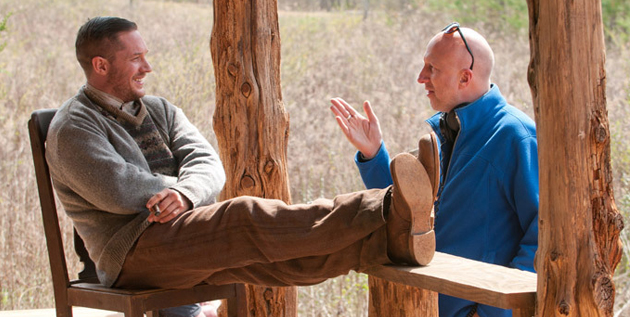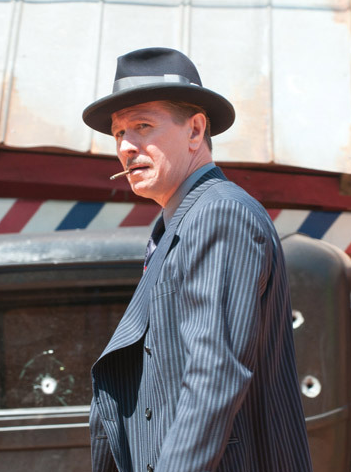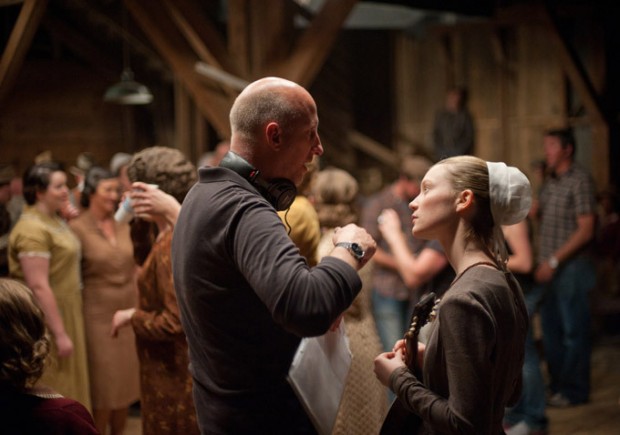
It began, for the most part, with a rather obvious, but important question: Did you know that you wanted to do an American gangster film?
Lawless director John Hillcoat seemed excited to answer, “Yeah, because I actually grew up in America and Canada and was brought up on that fantastic period in the ’70s when all these great new filmmakers were reinventing genres. So that was a bit of a dream to try and participate in that at some point…” The filmmaker went on to talk about everyone from Roger Corman to Arthur Penn, noting how genre films became more than just controversial, but also artistic and creative and character-driven, thanks to New Hollywood. Hillcoat criticized many of the genre films in theaters these days of being “pure action, no character.”
 In regards to the gangster genre Lawless operates in, both Hillcoat and writer Nick Cave were quick to acknowledge the beauty of the real-life, moonshine narrative of the Bondurant brothers, presenting the world of the gangster as one extended from the wild west. Hillcoat surmised simply that “when the West ended, the gangsters began.”
In regards to the gangster genre Lawless operates in, both Hillcoat and writer Nick Cave were quick to acknowledge the beauty of the real-life, moonshine narrative of the Bondurant brothers, presenting the world of the gangster as one extended from the wild west. Hillcoat surmised simply that “when the West ended, the gangsters began.”
Lawless went into production in early 2010, and has traveled a long and winding road to get to theaters, The Weinstein Company hosting test screenings as early as summer 2011. When asked about the challenges of responding to those test screenings and the changes that come from the process, Cave was very honest: “[You’re] screaming, kicking, fighting, clawing…I mean, that’s what filmmaking is. It’s that process of give-and-take between what is commercial and what is art, I guess, and that’s that big kind of fight that goes on.”
To that same point, Hillcoat added: “I was given final cut, but it’s always… there’s no such thing as final cut. You know, the whole thing is a collaboration from every aspect.” Cave spoke to Hillcoat’s pronounced ability to make art films that have commercial value. Hillcoat described it as “trying to have my cake and eat it to.”
Jumping from one creative compromise to another, Hillcoat discussed the switch to digital from celluloid. Lawless shot on mostly the Arri Alexa, a new kind of digital camera at the time of production.
And while the film succeeds in incorporating such a modern style of lensing into such a classical piece of storytelling – set nearly 100 years ago – Hillcoat was very honest about his hesitations in making the big switch, mourning the death of the medium he learned his trade in:
“I was very anxious about [making the switch from film to digital]. There’s a huge digital revolution that’s changing everything, and so I decided to try learning about that now. Our big turning point from a logistical point of view… our budget and the film started as a much bigger thing with Sony Pictures, and the economic crisis hit in 2008, and they said ‘We can’t make any of these sort of films anymore,’ and they never have since.
And it all shrunk down to an independent film, and a lot of night exteriors in the country. That was a challenge in terms of technically, logistically, lighting equipment, time and we did film tests, but my biggest fear was it feeling electronic, because for me, part of when you go to the past, I think it suits films much more, you know? I think Zodiac for me was one of the great digital cinema films, and Collateral really suited L.A. But this is going back in time before all of that, and I didn’t want that feeling. We were one of four films in the world to use the Arri Alexa [at the time], so it was new technology. There are things I wish I did now, now that I now know. So much has changed since we shot it. So I still have mixed feelings. There are pros and cons and I think everyone has jumped the gun. It’s not there with film yet. But already, as you know, Panavision and [company] are not making any film cameras. It’s all finished. There’s no stopping.”

Lawless hits theaters on Wednesday, August 29th.
